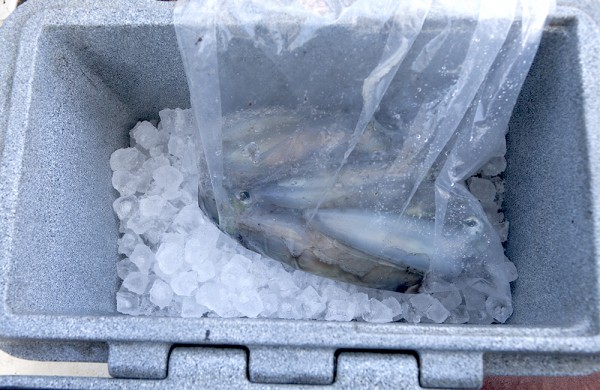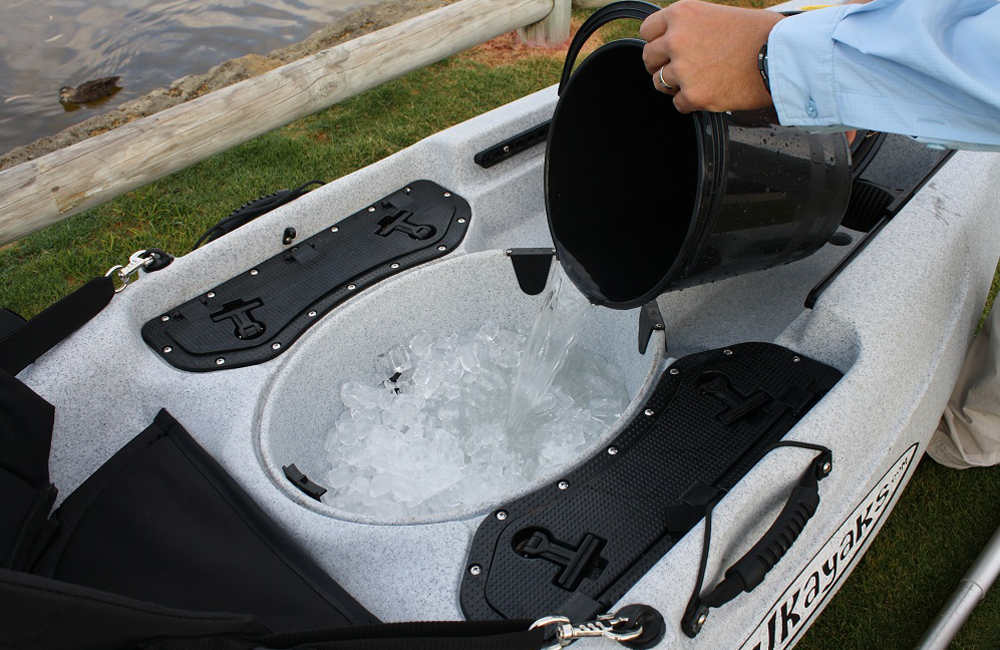The job that everyone hates can be made a lot less painful if you set yourself up with the proper tools in the first place. What you need is a work knife with a strong, but not too thick blade, and a filleting knife with a fine, very flexible blade. Anglers who skin most of their fish add a third knife, which is a knife with a flexible, but rather broad flat blade, although you can skin a fish with anything if you take a little care.
Gutting a fish is simply a matter of laying the fish on its side with the head away from you. Gently and carefully push the point of the blade into the anal vent, then cut forward to the throat. Take the blade in at a shallow angle to avoid cutting into the gut itself, as you don’t want to rupture the stomach or intestine and let all that acid and bile loose on the flesh. This is particularly important if you are cleaning a shark as the stomach juices are very acidic and will taint the flesh making it unpalatable.
Cut through the pectoral fins to the front of the gills. Holding the gills away from the body of the fish, cut through the gills where they attach to the backbone. Cut the gills away from the gill covers and remove the gills and gut by pulling it towards you. The gills are loaded with blood, and the more blood you can get rid of the better. Discard the gills and gut and wash out the cavity with seawater. If the gut lining is black, remove this by scrubbing out with a stiff nailbrush.
With the gut and gills removed, turn the fish over to allow yourself good access to the gut cavity, and use the back of the point of your knife to scour along either side of the backbone. Most fish have a pocket of blood along here that can either be scraped away with the knife, or easily removed by scrubbing with a stiff nailbrush. How much trouble you go to with all of this will depend on how long you need to keep the fish before you eat it (or prepare it for longer term storage), and whether you intend to fillet it or cook it whole. Again rinse the fish in saltwater to remove any blood left and pat the whole fish dry with paper towel.
If you are cleaning the fish in the field and want to keep only the fillets, this is the time to introduce plastic bags. Remember, plastic bags do not breathe, so heat builds up in them. You want to have your fish as clean and bacteria-free as you can get it before it goes into plastic, or it will quickly deteriorate.
Before you put any fish into a plastic bag, wash it, then dry it. It is essential to get rid of the blood and slime before you store fish, even if it’s only for a short period. The fish should be as dry on the outside as you can get it. When you have done this, drop it into the plastic bag and roll the bag closed to exclude as much air as possible.
A Note on Scaling
Fish are easier to scale when they are in one piece. It is not necessary to scale the fish if you plan on removing the skin from the fillet. Take special care of those areas close to the fins and spines that many people avoid doing because they fear puncturing their fingers on a spine. Just take it easy with this job and keep in mind that it is a potentially flesh-bruising operation.




